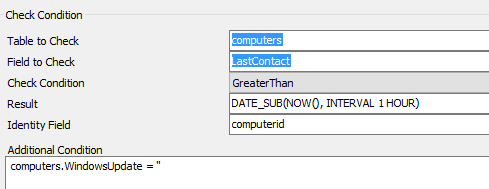I have a device that is not checking in. After contacting the client, the device is confirmed online.
In a remote session to a server on the client’s network, the device is answering pings and I can SSH into it. That’s when the trouble starts:
root@datto:~# checkin
Updating checkin script (using device.dattobackup.com)...
/datto/scripts/DoBackup.sh: line 93: /datto/scripts/pre-commands.sh: Read-only file system
Failed to communicate with checkin server, this is usually a result of network connectivity problems, exiting...
root@datto:~#
That’s the same “read-only” filesystem error message that I previously discussed in the context of a failed OS upgrade.
In that scenario, the issue is that fstab doesn’t have the right information for the software RAID array and is only able to mount read only.
The contents of fstab are below:
root@datto:~# cat /etc/fstab
/etc/fstab: static file system information.
#
# Use 'blkid -o value -s UUID' to print the universally unique identifier
# for a device; this may be used with UUID= as a more robust way to name
# devices that works even if disks are added and removed. See fstab(5).
#
#
proc /proc proc nodev,noexec,nosuid 0 0
# / was on /dev/sda1 during installation
UUID=c01732e2-8b21-4c3c-980f-97acab2326f3e
/ ext4 errors=remount-ro 0 1
# swap was on /dev/sda5 during installation
UUID=22ab332d-22e3-462b-98ba-d80a6c0956ea none swap sw 0 0
# array
root@datto:~#
What the heck? The first line should be commented out, but it isn’t. Additionally, the mount options for ‘/’ got broken into two lines. This seems like something that would be caused by a parsing script encountering input that it didn’t expect. Regardless, this certainly explains why the filesystem won’t mount.
So how do you fix this if it happens to you?
First, verify that the software RAID array is mounted. There are a few ways to do that, but I want to verify both that the array exists as a block device and that both members are a part of it:
root@datto:~# blkid /dev/md1
/dev/md1: UUID="c01732e2-8b21-4c3c-980f-97acab2326f3e" TYPE="ext4"
root@datto:~#
root@datto:~# cat /proc/mdstat
Personalities : [raid1] [linear] [multipath] [raid0] [raid6] [raid5] [raid4] [raid10]
md1 : active raid1 sdb1[1] sda1[0]
878916032 blocks [2/2] [UU]
unused devices:
root@datto:~#
Both drives are present, so we’re not looking at a data loss issue. The next thing to do is bring the device online read/write. Use the exact same method that we used while fixing the upgrade error:
root@datto:~# mount -o remount,rw /dev/md1 /
root@datto:~#
Now you can fix fstab. Similar to the previous article, this is probably a good time to call support.
That being said, if you want to fix it yourself, the solution here is to comment the first line and join lines 10 and 11 so that the mount options are on one line as intended.
Then your mount will work:
root@datto:~# mount -a
root@datto:~#
You’re pretty much set here. In my case, the lock on checkin was held so the appliance wouldn’t check in. However, I wanted to reboot anyway to make verify everything came back up.
Even if you did successfully get this up and running, I’ still suggest getting support to take a look.



